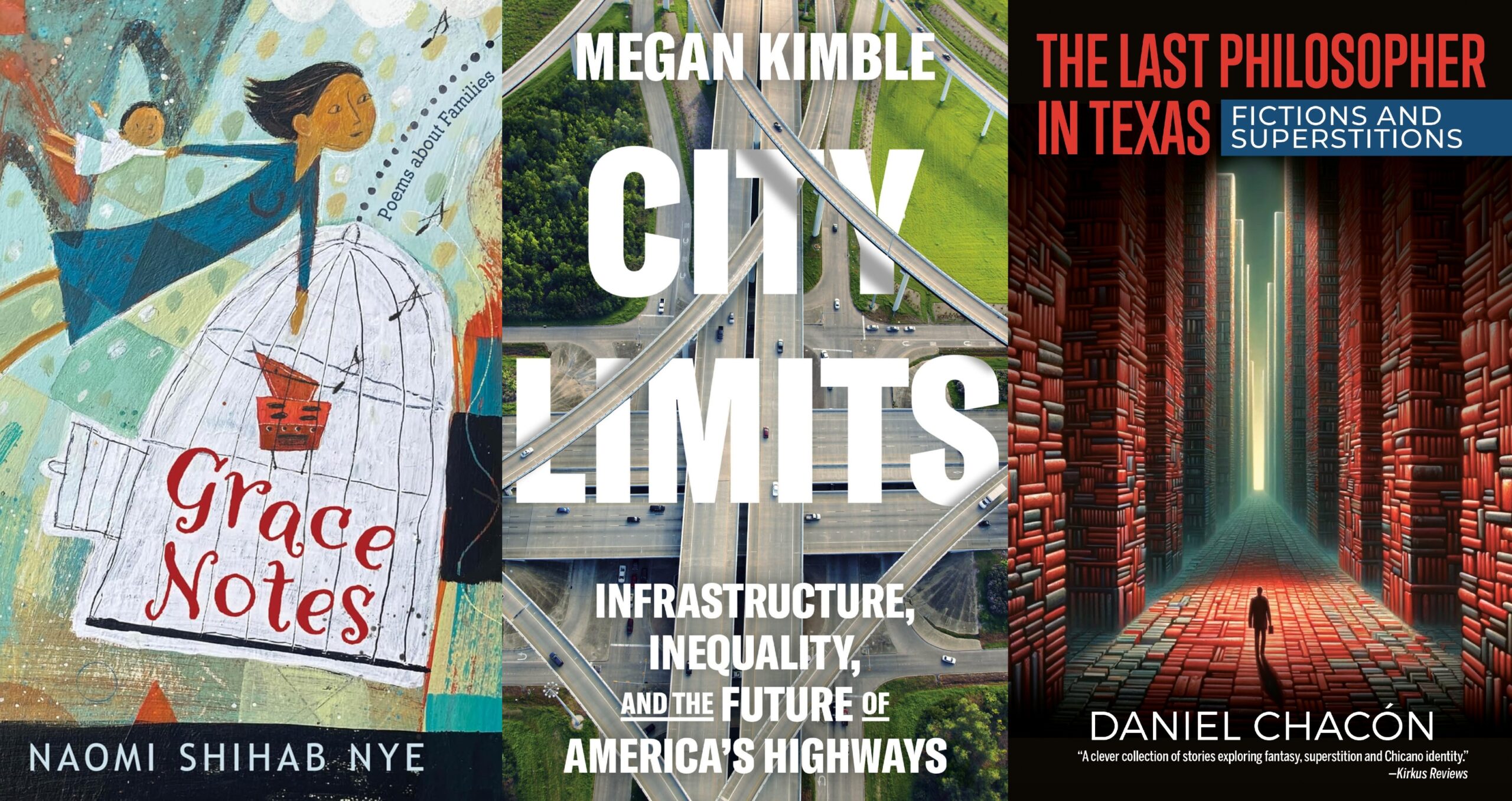Jordan’s Jasper
It’s a clear February morning in the small East Texas town of Jasper, and the Rev. John D. Hardin is looking for something he’s not sure he has. Clad in a blue windbreaker, the lead pastor of Mount Olive Baptist Church walks purposefully into one of the church’s tiny classrooms. He examines the portraits of stern-looking deacons from decades past mounted on the wall.
A few minutes later two female churchgoers arrive with several more framed black and white photos and hand them to Hardin. “Where did you find these?” he asks. A closet, the women tell him. Hardin brushes the dust off one, ignoring the mold growing inside the glass. He ticks off the names of pictured altar boys, choir members and Sunday school students.
“That’s when people went to church with meaning,” he laments. Then he promises: “We’re gonna put ’em up.”
A small stamp in the bottom righthand corner of the photos reads “Jordan’s Studio,” indicating the portraits were made by Alonzo Jordan, a former deacon at Mount Olive and Jasper’s first professional black photographer.
Hardin is not the only person to forget Jordan’s work, only to rediscover it in the unlikeliest of places. An exhibit of Jordan’s photos showed at the International Center of Photography in New York earlier this year. It marked one of the first times a prominent museum devoted an entire show to a “community photographer”—a man who lived and worked alongside the people whose lives he documented—and the first time Jordan’s work received national recognition.
Jordan’s portfolio includes nearly every significant moment—from graduations to weddings to parades—in Jasper’s black community from the early 1940s until his death in 1984. Though he photographed both whites and blacks, he became known as the go-to photographer for the black community at a time when Jasper was segregated. Jordan’s presence with a camera lent a certain significance to what were otherwise everyday events. In the process he helped affirm the self-worth of his subjects during decades when they were treated as second-class citizens.
Photography wasn’t Jordan’s first calling. Born in 1903, he graduated from Jasper’s all-black high school and got his barber’s license in 1929. Located in an extension off his small white-frame house, Jordan’s barbershop—with its green leather chairs and front porch—served as a meeting place where men came to discuss race relations, politics, the Bible and their daily lives. Jordan was known to keep books and pamphlets in his barbershop supporting the work of the NAACP and decrying racial discrimination. Former clients remember Jordan encouraging them as young men to study their lessons and obey their parents and teachers.
Deeply religious and soft-spoken, Jordan volunteered as a Sunday school teacher at Mount Olive and was active in Jasper’s chapter of the Prince Hall Masons, an offshoot of Freemasonry. Jordan snapped pictures recreationally with a small Kodak box camera until a friend asked him to shoot a coronation ball. The commission sparked Jordan’s interest in professional photography and in 1943—when he was nearly 40—Jordan purchased a Graflex Speed Graphic camera. He taught himself how to improve his technical skills and pose figures by reading books on photography. He cut hair four to five days a week and on Tuesdays and evenings took portraits and developed prints in his home studio and darkroom. His wife, Helen, helped him style clients, wash prints, and maintain business records. Jordan’s first gigs were portraits and functions at all-black schools—homecomings, coronations and graduations—though he quickly expanded to include weddings, baptisms, church events, funerals and parades in towns as far away as Beaumont and Nacogdoches.
Collectively, the photos show what life was like in a marginalized but tight-knit black community. Many of Jordan’s photos capture intimate moments that later became generational hallmarks. Girls in poodle skirts grasping their partners’ hands at a dance. Little girls with Mary Janes on their feet, hands pressed together in prayer. Marching band members in cowboy boots and cat-eye glasses stepping in unison down the street.
Other photos documented achievements. Homecoming queens sitting atop sparkly thrones, engulfed in white tulle. Stone-faced Marines in full uniform. Graduates donning red caps and gowns. Football players with their padding, hands on hips and shoulders back. Were it not for Jordan and his camera, Jasper residents now say, many of these proud moments might have gone unrecognized, or worse, forgotten.
Jordan’s photography helped build community identity. Though their technical quality and composition are impressive, Jordan’s photos are more significant in that they “were a validation of everyday life,” explains Alan Govenar, who discovered Jordan’s work through a friend and later curated the New York exhibit.
Govenar believes Jordan consciously emphasized the positive side of the community, and downplayed the poverty and racism that defined the Jim Crow era in which he worked. “It was a silent protest by showing a life-affirming, positive, proactive, we-can-do attitude,” Govenar says. “These are people that did not want to be deterred.”
For Jordan, photography was more than a job—his photographs became an essential part of the community in which he tried to foster a sense of dignity and pride. He shot parades without pay and was known to take school portraits for free if a student couldn’t afford to pay.
Jordan was never interviewed about his photography, but you can get a sense of his temperament and philosophy through his methods. He was known to ask subjects to sit still for almost an hour as he meticulously adjusted their pose and lighting.
“You’d think he’d be fixin’ to snap and he’d say, ‘Up, hold it, hold it. Stop!’” recalled Bonnie Williams, a 76-year-old Jasper resident who had her wedding photos taken by Jordan in 1957. A striking print of Williams seated in her childhood bedroom, her pursed-lipped sister adjusting her veil, was among those shown in New York. “He didn’t just snap to be snapping. He had you straighten up. Yes, he did.”
Emma Adams, Helen Jordan’s 74-year-old goddaughter, who spent her early years in the Jordan home while her parents worked, fondly remembers catching Jordan talking to his photos in the darkroom. “You just don’t look right, let’s see what we can do about you,” he’d say.
Jordan was certainly not the only community photographer of his time—Govenar has documented the work of several others in Texas—but Jordan’s work has attracted national attention due, in part, to events that occurred long after his death.
Jasper became a household name on June 7, 1998 when three white men dragged a black man named James Byrd Jr. to death behind a pick-up truck there. Jordan’s photos offer curious viewers a peek at Jasper life before the crime.
But Govenar cautions against looking for clues to the Byrd murder in Jordan’s photos, as if the event were somehow foretold in Jasper’s past. It is worth noting that Jordan’s photos don’t depict violence and racial tension, save for the visually obvious fact of segregation. His work affirmed fundamental values of family and community. He stayed away from nightclubs and late-night blues shows. “We didn’t go to those kind of places,” his wife would later tell Govenar. “We were churchgoing people.”
Still, the photos do serve as a kind of measuring stick for change in Jasper, in how they’ve been received and the dialogue they’ve prompted. As an extension of the New York exhibit, Govenar brought a set of Jordan’s prints to Jasper to display at the local history museum and hosted a panel discussion in February about Jordan’s life and work. Jasper residents who remembered Jordan well were shocked to see he had amassed such a large body of work. Others who lived in Jasper alongside Jordan, but never met him, reflected on how that happened. “What did I think that the black people were doing for photographs? That they just didn’t have any?” remarked Paul Smith, a white Jasper business owner, after the panel.
Though integration arrived at the end of Jordan’s career, many white residents never came into contact with him. Govenar notes in an essay about Jordan’s work how freely he experimented with angles and vantage points among the black community while remaining largely removed from the action among whites, who rarely turned to pose for his lens. They didn’t need to. A white photographer named Max Conn, with whom Jordan was friends throughout his career, had the same ubiquitous presence in his community.
Govenar calls the photos “a shared history . . . not known by everyone.” He hoped the exhibit and panel would allow Jasper residents to discuss their past outside the context of Byrd’s murder. The photos, devoid of fault or blame, allow Jasper residents to talk frankly about the lives they lived in the past, and the ones they live now.
Jordan photographed a black community that, in many ways, has disappeared. “We were so dependent on each other,” said Walter Diggles, 59, a town leader who heads an East Texas regional planning commission. “We don’t have that same close-knit black family community because it’s been so integrated in the regular community. It was kind of necessary when there was segregation. There was a lack of economic opportunity and a lot of poverty.”
R.C. Horn, Jasper’s first black mayor, says that while the closeness the black community experienced during the years Jordan took photographs may be gone, blacks in Jasper have traded that for the right “to speak out and do the things they’re doing now.”
Once confined to certain neighborhoods, blacks and whites are now spread throughout Jasper’s 10 square miles. Fewer blacks in Jasper live below the federal poverty line than did a decade ago, many businesses—Billy’s Old Fashion Barbecue, Coleman’s Mortuary—are black-owned, and the town consistently elects black city council members.
Jasper is not without its problems. The small town is struggling to stay economically viable in the face of a faltering lumber industry, a population that’s fallen to 7,600, and a local high school that’s received “unacceptable” performance marks in recent years. But the difficulties comprise, for the most part, a shared burden.
Jordan’s home still stands on North Main Street, brush growing over the side where the darkroom used to be. After Jordan died, a storm damaged the studio roof and many photographs and negatives were damaged. Govenar managed to preserve and archive about 6,000 at the Dallas-based Texas African American Photography Archive. Jordan had no children and Helen died last year. She is buried at his side in Jasper’s cemetery, where black and white graves were long separated until Byrd’s murder prompted a group to tear down the dividing iron fence.
Jordan’s work lives on in the photographs still displayed in Jasper—informal tributes to an unsung hero. A collection of football photos at the barbecue shop. Class portraits and dance snapshots in a community center. Wedding photos on shelves and in albums.
Since Jordan’s death, no one has emerged to fill his shoes in documenting the town’s modern-day black community—at least not as reliably or as painstakingly. But Jasper residents say part of Jordan’s lasting legacy is that he helped pave the way for other black men and women to become successful in their own ways. He was, said Rev. Kenneth O. Lyons, who went to Jordan’s barbershop as a kid, “an icon.”
“At the time we didn’t know how much of an impression he had on us,” Lyons said. “But if Mr. Jordan can do it, we can do it.”
Visit the Texas African American Photography Archive
Kalyn Belsha is a freelance journalist based in Chicago. Her work has appeared in the Houston Chronicle and the Beaumont Enterprise.

